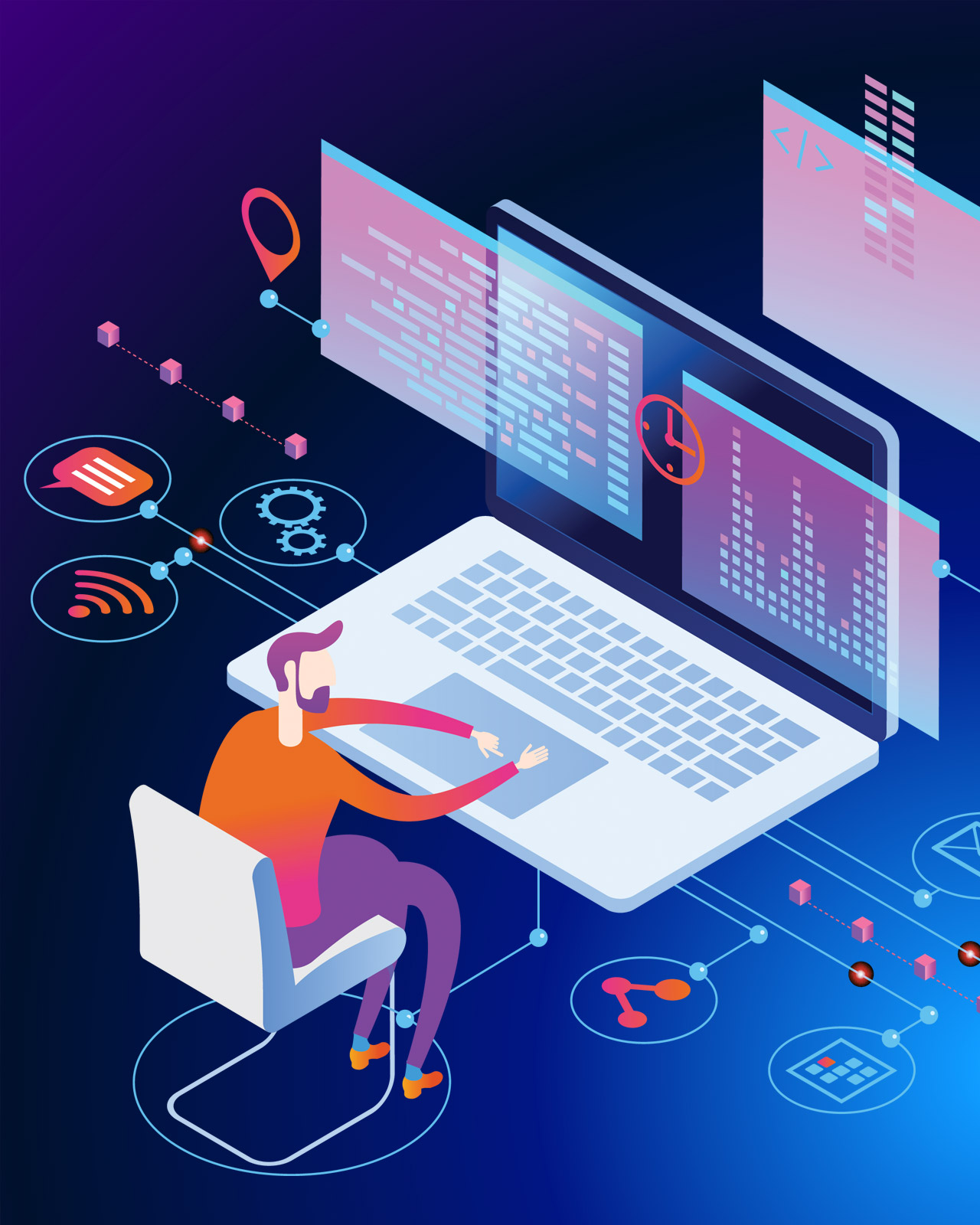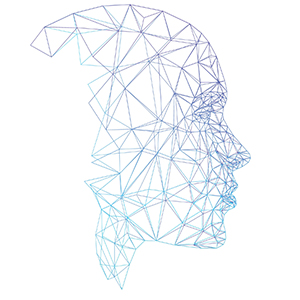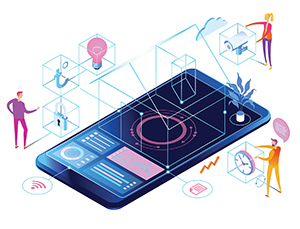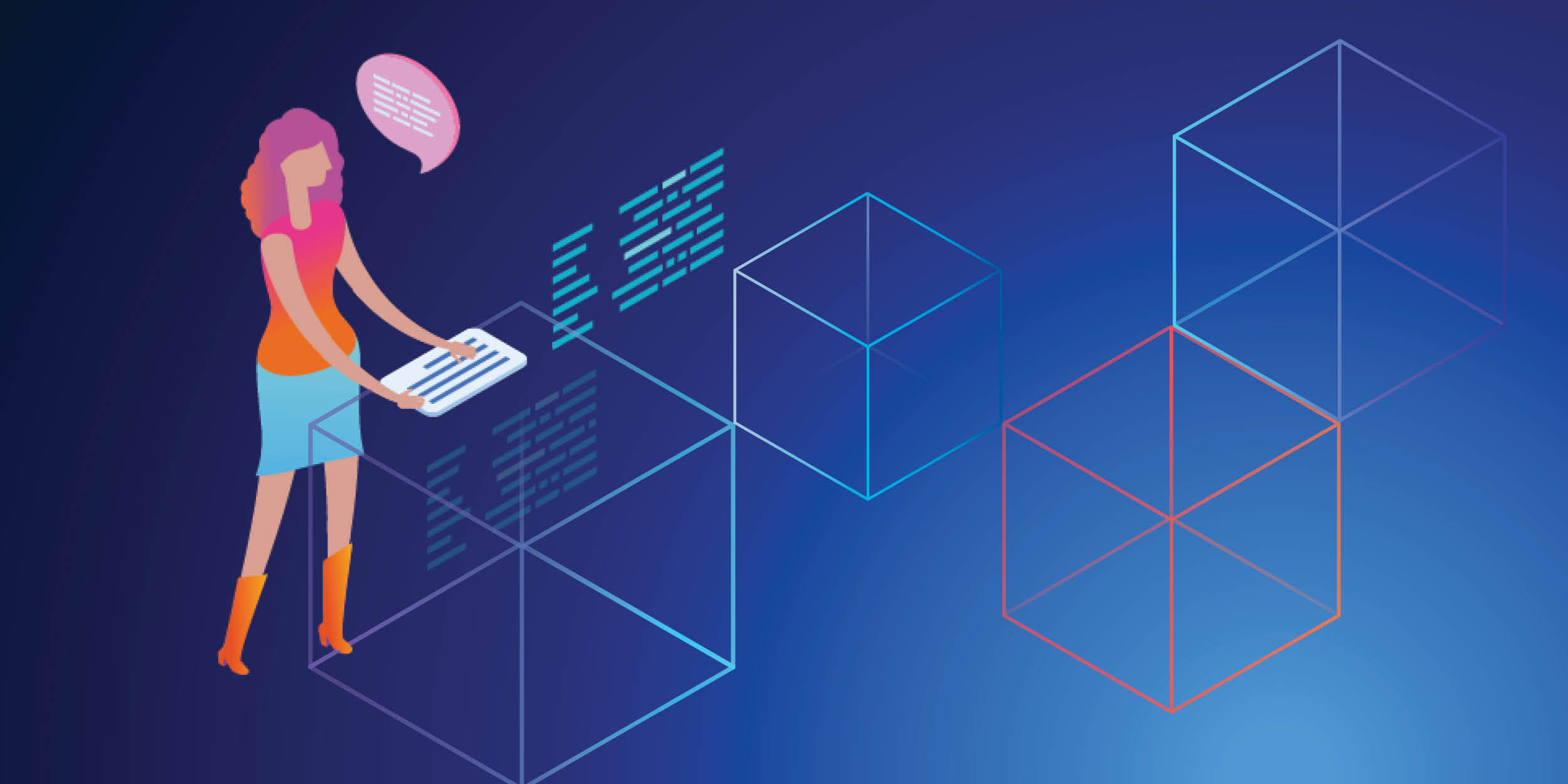
Inside the AI Uproar
Since ChatGPT launched in November 2022, a background hum about artificial intelligence has grown to a roar. The global AI market was valued at $136.55 billion in 2022, according to Grand View Research, and is expected to increase at a compound annual growth rate of 37% from 2023 through 2030. Society scares easily — but should we fear AI? Or cheer on this new way to get things done?
But Boston-based entrepreneur Santhana Krishnan, MSCIS ’92 has seen this all before. And he isn’t nearly as nervous as the 79%. He started his first business in 1995, when the internet was transforming how people do business. Now, he’s witnessing a similar transition.

AI is to business today as the internet was then, he says: “The speed at which they are coming up with AI tools is mindboggling right now. All these kingdoms are being created.”
And it should be noted that the same WEF report estimating the replacement of 85 million jobs by 2025 also predicts the creation of 97 million new jobs in the same time frame.
AI is more than a mere trend; it’s remaking the business world faster than you can say “Siri.” And used smartly, it can better all of our lives.
Home Smart Home
In 2022, Krishnan launched Dwellin, an app that helps people stay on top of home maintenance tasks and educates them on ways to reduce their costs and carbon footprint. It’s “one place to keep everything about the home,” he says.
Five or six years ago, it would have been impossible to start this business, he says. “The technologies were not there. There’s so much data you need to bring in. I need to filter the information I want to share with the user. It’s about showing only the most relevant, actionable items.” He adds: “That’s where AI comes into play.”
In general, artificial intelligence, or AI, is any technique that makes a machine behave in a smart way. In recent years, a type of AI called machine learning has become widespread, increasing productivity and revenue. Machine learning is AI software that learns from large data sets full of examples. In general, the more computing power and data available, the smarter this software can get. In a 2021 survey by SambaNova, 78% of business leaders said that AI and machine learning were very important for driving revenue at their organization.
ChatGPT — an example of a type of machine learning called generative AI — took things to the next level with its ability to generate useful code and competent writing. Generative AI is any machine learning software trained to produce text, video, images, music and other types of content. When Mark Frydenberg first learned of the ChatGPT app, the senior lecturer in Computer and Information Systems recalls thinking, “Wow, this is something.”
He wasn’t alone. ChatGPT set a record for the fastest-growing user base ever when it reached 100 million active users in January 2023.
These tools are already replacing some roles that people used to have. Administrative, legal, financial and management tasks are among those most likely to be automated, according to a 2023 report by Goldman Sachs. At the same time, new businesses and jobs are emerging that never could have existed in the past. In 2023, companies like Anthropic, an AI research firm based in San Francisco, began seeking “prompt engineers” to come up with the best inputs to use with generative AI models, often offering six-figure salaries.
As with the rise of the internet, people and businesses who adapt to new AI tools quickly have a lot to gain.
Think — And Learn
The internet put all of the world’s information at society’s fingertips, but it was up to the user to slog through it.
AI offers just the right content, right now. Thanks to tools like ChatGPT, people can now interact with technology in a more conversational manner. Weather app Tomorrow.io relies on a network of satellites to help predict the forecast. The app recently launched a feature that lets users ask questions, such as: “Is it a good idea to go play golf in three hours?”
Tomorrow.io knows your location and gives narrative responses, says CFO Stephen Gregorio ’82. “We’re looking at AI here at work in terms of how it can help all phases of the business, from helping to write software to helping with marketing messaging.” But when used sloppily or unethically, artificial intelligence can infringe on privacy or copyright, perpetuate biases, spread misinformation or cause frustration,” says Assistant Professor of Computer and Information Systems Mareike Mohlmann. Her research focuses on the business ethics of AI.
“It is important for students to understand the basics of how these systems work to critically reflect on whether they’re adequate or trustworthy,” she says, adding: This is important not just for students, but for anyone interacting with AI. Learning about AI and thinking critically about its use are the first steps toward beneficial use.
Take bias in machine learning. In 2018, MIT’s Joy Buolamwini, a Ghanaian-American-Canadian computer scientist, had to wear a white mask to get an AI model to see her face. She tested three different facial-recognition models. All three had trouble detecting Black female faces because their training data sets mostly contained images of white men. Developers have since trained this type of software on more inclusive data sets. But it’s not always clear which biases an AI model might have learned.
ChatGPT is prone to what some developers call “hallucinations,” or outputs that seem factual but aren’t. It may invent citations to articles that don’t exist, bios that contain events that never happened and other false information. For instance, this writer asked ChatGPT to generate her biography. It got some of her writing credits correct, but also awarded her an impressive, yet completely false master’s degree from MIT. Many public school systems and companies have banned the app due to concerns about inaccuracy and privacy.
Lack of transparency is another issue. Take Uber: “Algorithms are literally managing millions of drivers around the world,” Mohlmann says. This is great for the company, but not so good for drivers who often don’t understand or agree with the app’s decisions on how much they get paid.
“Workers feel very frustrated because they’ve only had the opportunity to interact with the machine,” says Mohlmann. To resolve this type of situation, she suggests that a company should make sure its human workers have a voice in how the AI models they interact with function.
To solve these types of ethical and societal issues surrounding AI, many experts have called for regulations, and government officials in the U.S. and other countries are considering stricter oversight of AI.
Advice From a Digital Native
Hailey Jennato ’24 may not be an engineer, but, like others of her generation, she is a digital native who grew up surrounded by technology. When it comes to AI, she says that the younger generation “is really going to be pushing to adopt these kinds of tools.” She adds that AI tech “is moving really quickly.”
A double major in Marketing and Media Arts, Jennato makes a point to educate herself about AI. Thankfully, at Bentley professors regularly include AI technology in their courses. In a recent class on using Python to make visualizations with charts and graphs, Mark Frydenberg encouraged students to generate code with the help of ChatGPT. However, he explained that the students “need to still understand the code.” ChatGPT isn’t doing their work for them, they’re using it like an assistant, and they have to verify its results. Elsewhere at Bentley, a task force is studying ways to integrate AI into courses and university operations, and a new AI major will be introduced next year.
One of the most exciting things about AI, Jennato notes, is how good it is at finding patterns in data that a human might not catch. “You get much better insight into your company data, which you can use to create strategic plans,” she says. In one of her internships, a sales team used AI to generate deals for customers. AI would “analyze all the information they had on a customer and then suggest the best deal that you should present to the customer in that moment,” says Jennato. Most people wouldn’t have the time or skills to figure out the sale or promotion that’s most relevant to the customer — the one that will have the highest chance of success.
In addition, when AI takes over tedious or repetitive tasks, human workers can focus on things that have more impact or are more interesting, Jennato says. Ideally, this results in happier, less stressed workers who are focused on rewarding work.

What is Inflation? A Bentley Student and AI Explain.
A. Inflation is an issue as old as time but has recently been at an all-time high. inflation, simply put, is when there is a steady increase in the price of goods and services, which tends to reduce the value of currency, also known as aggregate price. an increase in inflation leads to an increase in supply. the impact of covid and the economic dip it caused led to high inflation rates as the economy began to recover. high inflation rates are alarming because they put more stress on the consumer as the goods and services they once were able to pay for may no longer be within their budget. in return, the economy suffers if consumers aren’t spending. if their wages are not proportionately increasing compared to price increases, it’s no wonder people aren’t spending as much.
B. Inflation is the persistent increase in the general price level of goods and services within an economy, typically measured as an annual percentage. It affects consumers by eroding the purchasing power of their money. As prices rise, the same amount of currency can buy fewer goods and services, reducing real income. High inflation can lead to uncertainty, making long-term financial planning challenging. Additionally, it can result in higher interest rates, increasing the cost of borrowing. However, moderate inflation can stimulate spending and investment, which can be positive for economic growth. So the impact of inflation on consumers depends on its rate and stability, requiring individuals to adjust their financial strategies accordingly.
The Real Promise of AI
Like any technology, AI by itself is neither good nor bad. It’s how people apply it that matters.
As Frydenberg demonstrated in his class, we should think about AI as a tool that can improve our lives — one that augments the work we’re already doing. People still have to tell AI which task they’d like it to perform, which type of paragraph to write or image to design. And, Frydenberg says, people are still the ones making strategic decisions about how to train and implement AI, managing the machines to make sure they perform as desired and, most important, maintaining human business relationships.
Most of us enjoy the personal touch of interacting with other people, adds Mohlmann. Jobs that involve social and emotional work, like nursing, are least likely to be automated, she says.
Intelligence is the real promise of AI — it’s right there in the name. But, in the end, it’s not really about how smart the machine is. It’s about how we use the technology to augment and enhance our own human intelligence, allowing us to create things and address problems in the world in brand new ways.
As Frydenberg says, people should use AI to “work not just faster, but faster and smarter.”
AI Has Been Our Partner For Decades
Researchers have been trying to model intelligence in machines since computers were so large that they took up entire rooms. The first academic conference about artificial intelligence took place at Dartmouth College in 1956. Scholars had great hopes for this new “AI,” but at the time it couldn’t accomplish much.
As computing speed and data capacity increased, AI got smarter.
In 1996, the IBM computer Deep Blue defeated world chess champion Garry Kasparov. This was a triumph of symbolic AI, an early form of AI technology that relied on logic and rules.
In the years to follow, machine learning became far more powerful and popular. Common applications today include the technology that powers recommendations for online retail and streaming services. Driverless cars rely on machine learning to navigate around city streets, and medical researchers use it to search for proteins that might lead to new cures. ChatGPT and Google’s Bard generate writing samples and code, while Midjourney and Stable Diffusion create artwork and even video. With so much attention now focused on it, new AI tools will undoubtedly emerge in the coming months.

